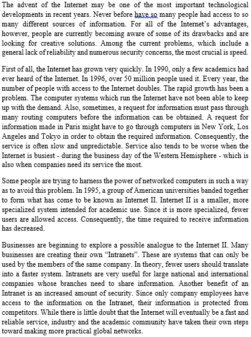Read the following passage and mark the letter A, B, C, or D to indicate the correct answer of each question.
Boots has reduced the price of "feminine" razors to bring them in line with men's. The chemist chain says it is just an isolated incident, but campaigners say it is part of a "pink tax" that discriminates against women. Who's right and what's the bigger story, ask Jessica McCallin and Claire Bates. Campaigners against what's been dubbed the "pink tax" - where retailers charge women more than men for similar products - are celebrating after Boots said it would change the price of some of its goods.
Stevie Wise, who launched the petition, was driven by a Times investigation which claimed that women and girls are charged, on average, 37% more for clothes, beauty products and toys. The New York Department of Consumer Affairs had compared the prices of 800 products with male and female versions and concluded that, after controlling for quality, women's versions were, on average, 7% more expensive than men's.
“This is a very exciting response,” says Wise. We are delighted with Boots' decision, but we now need to get them to look at all of their products, not just the ones highlighted in the petition. We hope this decision is just the first of many and we may broaden our campaign to focus on other retailers as well." Wise says that women have been getting in touch with examples of other price discrepancies from lots of companies and says there seems to be a particular problem with toys and clothes. Argos has been criticized for identical scooters that cost £5 more if they were pink rather than blue. Argos said it was an error that had already been rectified and that it would never indulge in differential pricing.
Among the examples sent to Wise was Boots selling identical child car seats that cost more in pink. Another retailer was selling children's balance bikes which cost more for a flowery print aimed at girls than a pirate print aimed at boys. But the latter example already appears to have been tweaked on the retailer's website, albeit by applying a £10 discount to the flowery version.
When challenged over sexist pricing, both Levi's and Tesco argued that different versions of things could have different production costs even if appearing fairly similar. Prof Nancy Puccinelli says her research suggests that women are much more careful shoppers than men, better able to scrutinise adverts and pricing gimmicks. She wonders if women are perceiving more value in the more expensive products. “If products are separated into male and female sections far away from each other it's harder to scrutinise prices.” Such a situation could either be deliberate or accidental but the campaigners are not convinced.
There is an opportunity for some companies, argues Olchawski. “The finding shows the power of marketing in our lives, how it shapes our perception of what it means to be a man or a woman. Some companies could choose not to play into this, not to play into the stereotypes and rip women off, but launch products more in tune with moves toward gender equality.”
(Adapted from FELTS Academic Reading Test 6. Section 3)
After comparing the prices of 800 products with male and female versions, the New York Department of Consumer Affairs __________.
A. did nothing
B. drew a conclusion that versions for females seemed to be more expensive than for males
C. supported for women's right
D. continued to control for quality





Đáp án B
Vụ Tiêu Dùng New York (cơ quan chịu trách nhiệm về các vấn đề tiều dùng) đã làm gì sau khi so sánh giá giữa 800 sản phẩm của nam và nữ?
A. Họ không làm gì cả.
B. Họ kết luận rằng các sản phẩm của phụ nữ có mức giá đắt hơn so với các sản phẩm của nam giới.
C. Họ ủng bộ quyền của phụ nữ.
D. Họ tiếp tục kiểm soát về mặt chất lượng.
Căn cứ vào thông tin đoạn 2:
“The New York Department of Consumer Affairs had compared the prices of 800 products with male and female versions and concluded that, after controlling for quality, women's versions were, on average, 7% more expensive than men's." (Vụ Tiêu Dùng New York đã so sánh giá giữa 800 sản phẩm của cả nam và nữ, và kết luận rằng, sau khi kiểm soát chất lượng, các sản phẩm của phụ nữ có giá trung bình đắt hơn 7% so với nam giới)